Whether you adopt a rescue dog or bring home an American Kennel Club–certified pup, providing that pet with proper care, a soft place to snooze, and good nutrition is, as the saying goes, a big responsibility. The question of what to feed your dog should take into account its age, size, breed, and any health issues it may have. But none of that will matter if your dog doesn’t like the taste. To get a better idea of which foods are preferred by the experts in this field — both human and canine — we talked to 13 veterinarians and animal specialists about the ones they recommend for their patients and feed to their own dogs at home.
Best overall | Best wet dog food | Best dehydrated raw dog food | Best fresh dog food | Best (less expensive) fresh dog food | Best non-subscription fresh dog food | Best for large or giant-breed dogs | Best prescription dog food for allergies
What we’re looking for:
Meets AAFCO nutritional standards: It’s important to look at a brand’s recall history and to locate an official nutritional-adequacy statement from the Association of American Feed Control Officials on the bag, box, or can. The AAFCO statement is a sign that the food is nutritionally complete and balanced, explains Dr. Zay Satchu, the co-founder and chief veterinary officer at Bond Vet. All of the dog food recommended below meets or exceeds AAFCO standards.
Made with high-quality ingredients: While ensuring that your dog’s food meets AAFCO standards is a good starting point for your research, when you’re shopping for dog food, you can definitely dig deeper. “I personally prefer to only select companies that employ a full-time board-certified veterinary nutritionist on staff and don’t just consult with one,” says Texas-based integrative veterinary expert Dr. Hunter Finn. Veterinarian Dr. Shelly Zacharias, a vice-president of medical affairs for Gallant, also stresses that dog-food ingredients lists should name the exact type of meat included (instead of “meat” or “meat by-products”) and should not contain white flour, preservatives such as BHA or BHT, propylene glycol, or rendered fat.
If your standards are higher than knowing just what kind of meat is in your dog’s food, Dr. Jamie Richardson, the chief of staff at Small Door Veterinary in New York City, says a growing number of the pet owners she sees are interested in human-grade or fresh pet foods. As this is a relatively new concept in the pet-food world, definitions vary a bit by brand, but, generally speaking, something labeled “fresh pet food” is minimally processed, does not contain preservatives, and is gently cooked to retain nutrients and reduce the risk of harmful bacteria present in some raw diets. These foods look a lot more like human food than traditional kibble or canned wet food. They usually come frozen and need to be thawed before each meal. If you would rather cook your own dog food, Finn pointed us to the handy online tool Balance IT, which will help you put together a nutritionally balanced menu.
We should also note that the FDA has put out a warning about certain grain-free foods, which the agency thinks may be linked to an increase in dilated cardiomyopathy in dogs. According to veterinarian Dr. Sara Ochoa, “Large and giant-breed dogs are predisposed to this disease.” The majority of the vets we spoke with explained that the correlation doesn’t stem from the lack of grains in these foods but rather from the legumes or peas that have been added as a replacement. Veterinarian Dr. Angie Krause says, “When a dog’s diet gets so high in legumes as a protein source, it may change their uptake of certain amino acids.” Since every dog is unique, if you’re thinking about changing your dog’s diet, it’s a good idea to consult with your veterinarian before doing so.
Tastes good: Veterinarian Dr. Stephanie Liff of Pure Paws Veterinary Care explains that palatability is a vital part of deciding what to feed a dog. “I want my patients to like eating it,” says Liff, who feeds her three-year-old Labradoodle a combination of human-grade and air-dried raw food as well as kibble. One way you know your dog is eating the right food, according to Liff, is if it produces “good-quality (easy to pick up) stool.” And if you’re wondering whether your dog likes the taste of its food, it should be obvious enough: If your dog enjoys the food, it will probably eat it in one sitting. “Dogs do not necessarily love to just leave food in the bowl until the next time they’re feeling hungry,” says Finn. With all the choices available today, you should have no problem finding food your dog loves.
Breed size: The main difference in foods formulated for small and toy dog breeds, according to Richardson, is that these are made in smaller chunks. Because little dogs have smaller mouths and teeth, you want to give them something that’s easy for them to bite and chew. And because they don’t eat as much as large or giant-breed dogs, you may have more financial wiggle room when it comes to choosing their food.
Wet versus dry food: The decision to feed your dog wet food rather than dry often comes down to convenience, personal preference, and price. But if you have a dog that’s reluctant to drink enough water, serving it wet food can be a sneaky way to help it stay hydrated. In addition to wet dog foods that come in a can, fresh and human-grade dog foods should be considered wet foods since their cooking process helps retain the food’s original moisture.
Reviews About The Very Best Dog Foods
Royal Canin Size Health Nutrition Small Adult Formula Dog Dry Food
Royal Canin Size Health Nutrition Small Adult Formula Dog Dry Food
$16
First ingredients are brewer’s rice, chicken by-product meal, and wheat | Medium breeds | Dry food
Of the 13 veterinarians we spoke to, nine said Royal Canin dog food is their top pick for their own pets and the dogs they treat at work. Dr. Gregory Gstrein, a staff veterinarian at a VCA Animal Hospital in California, says, “The best foods are backed by actual research and feeding trials, and Royal Canin does the extensive work needed to prove their foods yield excellent real-world results.” Dr. Catriona Love, an associate veterinarian at Heart of Chelsea Veterinary Group, feeds Royal Canin to her five-pound, 12-year-old Chihuahua rescue and says that of the three dog-food brands she recommends to her patients, Royal Canin is the most palatable. “I think the animals tend to like it more,” she says.
$16 at Amazon
$16 at Chewy
Best wet dog food
Royal Canin Veterinary Diet Gastrointestinal Low Fat Canned Dog Food
Royal Canin Veterinary Diet Gastrointestinal Low Fat Canned Dog Food
$110 for 24
First ingredients are water, pork by-products, and pork liver | All breed sizes | Wet food
Veterinarian Dr. Jeff Werber says he likes Royal Canin because the brand has a positive track record and a trusted name, and its products are readily available. He told us he has always been a fan of mixed feeding, meaning providing a little of both dry and wet foods. Werber explains that because a lot of dogs don’t drink enough water, adding moist canned food (which has fewer carbs and more flavor) to their dry food is a win-win. He says his dogs “love with a capital L” Royal Canin’s low-fat canned dog food.
$110 for 24 at Chewy
Best dehydrated raw dog food
Stella & Chewy's Freeze-Dried Raw Stella's Super Beef Dinner Patties Grain-Free Dog Food
Stella & Chewy’s Freeze-Dried Raw Stella’s Super Beef Dinner Patties Grain-Free Dog Food
$34 now 12% off
$30
First ingredients are turkey with ground bone, turkey liver, and turkey gizzard | All breed sizes | Dry dehydrated raw food
When it comes to raw-food diets for dogs, there are some strong opinions in the veterinary community. Unsurprisingly, many vets feel that feeding your pet raw food can lead to potential health risks for both the dog and the humans who live with it. “I am not an advocate for any raw food at this time, as there is a very real risk for contamination to other household members, including people,” says Finn. “If the research comes out years down the road and suggests that raw food is indeed better for pets and can improve their lives, then I will be the first person to switch my dogs over immediately. Unfortunately, the research is lacking at this point in time.”
Others, including Krause, Liff, and veterinarian Dr. Marty Goldstein (who literally wrote the book on holistic medicine for pets and has his own line of dog food), explain that extra hygienic precautions need to be taken with raw foods, but they believe those precautions are worth the added nutritional benefits, such as improved digestion and immune-system functioning as well as less inflammation and fewer allergies. Liff says she has patients that do well on raw diets, but she always has “a lengthy discussion with owners about food handling to prevent foodborne illness.”
According to Goldstein, freeze-dried raw foods have less risk of foodborne illnesses and can be stored without refrigeration. Krause says that if her own dog didn’t have specific food sensitivities, she would feed it a raw diet — specifically, these Stella & Chewy’s dehydrated raw turkey patties. They meet AAFCO standards and can be served dry or mixed with a little warm water to rehydrate them. Krause told us she’s a fan of literally everything the brand makes, saying, “Stella & Chewy has never put out anything I haven’t liked.”
$30 at Amazon
$34 at Chewy
Best fresh dog food
NomNomNow Subscription Dog Food
NomNomNow Subscription Dog Food
First ingredients are ground beef, russet potatoes, and eggs | All breed sizes | Frozen wet food
Fresh or human-grade dog food is more appealing to many dog owners who appreciate that it looks more like something they would eat. “If health and wellness are a priority, I absolutely recommend human-grade fresh food,” says Satchu, who feeds fresh-cooked dog food to his own pets. However, he stresses that whatever food you pick (especially some of the newer, designer-label foods) must be nutritionally balanced. The AAFCO stamp of approval helps to make this easy to differentiate. When we spoke to veterinarians about the best food for puppies, Richardson recommended the direct-to-consumer subscription brand Nom Nom. According to her, the brand works directly with a veterinary nutritionist to create diets specific to your pet that conform to AAFCO standards. “There are not a lot of other companies who do that,” she told us.
Nom Nom says its plans start at around $3 a day for the smallest dogs with few dietary restrictions. To determine a meal plan (and an actual price), the company asks you to fill out a survey about your pet’s breed, age, activity level, and weight goals. If you want Fido to try before you buy, you can order a variety pack with four of the brand’s foods for a flat $15.
Request price at NomNomNow
Best (less expensive) fresh dog food
The Farmer's Dog Subscription Dog Food
The Farmer’s Dog Subscription Dog Food
First ingredients are chicken liver, Brussels sprouts, and cabbage | All breed sizes | Frozen wet food
Satchu suggests the slightly cheaper subscription-based food from the Farmer’s Dog for anyone looking for a fresh option. Like Nom Nom, this brand worked with board-certified veterinary nutritionists to formulate recipes that are complete and balanced according to AAFCO standards. As further evidence of its food’s quality, the Farmer’s Dog has released results from ongoing long-term feeding trials showing that the nutritional value in its food exceeds AAFCO recommendations.
The company says its plans start at around $2 a day for the smallest dogs with few dietary restrictions. Again, you’re asked to answer questions about your dog’s breed, age, activity level, and weight goals to determine a meal plan and its actual cost.
Buy at The Farmer's Dog
Best non-subscription fresh dog food
JustFoodForDogs PantryFresh Lamb & Brown Rice (Case of 12)
JustFoodForDogs PantryFresh Lamb & Brown Rice (Case of 12)
$89 for 12
First ingredients are lamb hearts, brown rice, and cauliflower | All breed sizes | Wet food
While Finn is not exactly anti-kibble — “Every animal and situation is different, so don’t ever let someone shame you for the food you feed your pet,” he says — Finn likes the California company JustFoodForDogs, which, he says, “has an astounding team of veterinarians from multiple specialties” and “is doing a good job in terms of fresh-cooked food.” The company’s PantryFresh range is made up of complete meals formulated from human-grade ingredients like macaroni, rice, turkey, beef, potato, lamb, and chicken. As the name implies, these prepackaged foods are pantry stable and ready to eat, yet they contain no iffy preservatives.
$89 for 12 at Amazon
$89 for 12 at JustFoodForDogs
Best dog food for large or giant-breed dogs
Purina Pro Plan FOCUS Sensitive Skin & Stomach Adult Dog Food (5lb, packaging may vary)
Purina Pro Plan FOCUS Sensitive Skin & Stomach Adult Dog Food (5lb, packaging may vary)
$50
$52 now 4% off
Buy at Amazon
From $19 at Chewy
First ingredients are salmon, barley, and rice | Large breed | Dry food
According to the experts we spoke to, owners of large and giant-breed dogs should avoid foods that contain legumes as a protein source. Nicole Goudey-Rigger, the owner and CEO of doggy-day-care service Pets a Go Go, told us she took her two purebred Akitas and two medium-size mixed breeds (a golden retriever–Chow Chow mix and an Australian shepherd mix) off their low-grain diets after the potential connection between DCM and grain-free food was identified. Instead, she now feeds her four big dogs Purina Pro Plan Salmon Sensitive Stomach, which contains brewer’s rice and barley (and no legumes). She and three other experts we spoke with like Purina Pro Plan foods because, as Gstrein points out, the recipes meet AAFCO standards and are formulated by a veterinary nutritionist. Goudey-Rigger adds that the Purina Pro Plan line features a wide variety of proteins, including chicken, beef, salmon, duck, lamb, pork, and even quail. Looking for a variety of proteins in a brand’s line is important, she says, because “not all proteins agree with all dogs.” Ochoa’s dog also likes Purina Pro Plan and gets a small portion of the brand’s shredded-chicken food (a legume-free mix that includes chewy and crunchy pieces) as a complement to Hill’s Science Diet.
Best prescription dog food for allergies
Royal Canin Veterinary Diet Ultamino Dry Dog Food 8.8 lbs bag
Royal Canin Veterinary Diet Ultamino Dry Dog Food 8.8 lbs bag
$69
First ingredients are cornstarch, hydrolyzed poultry by-products aggregate, and coconut oil | All breed sizes | Dry food
Although Krause is a fan of minimally processed or raw-food diets for dogs (and is a brand ambassador for the freeze-dried raw-dog-food brand I and Love and You), she says her own pug is “allergic to life.” Because of allergies, Krause’s dog is on a super-hydrolyzed diet, which means the proteins it eats are broken down into individual amino acids. She says the diet “is so far from natural, but he does great on it and he’s happy on it.” Liff, Gstrein, and Satchu also recommend this hydrolyzed diet for dogs with allergies, as does veterinarian Dr. Jennifer Coates, who feeds it to her elderly boxer, Apollo, which has severe inflammatory-bowel disease.
Note: While this food is for sale online, you do in fact need a vet’s prescription to purchase it.
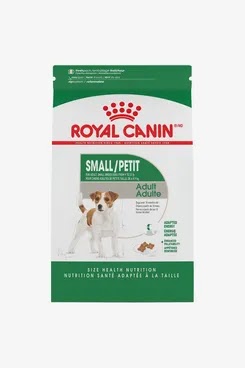
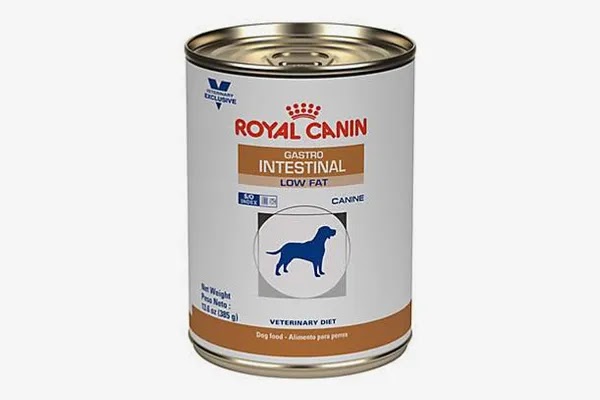

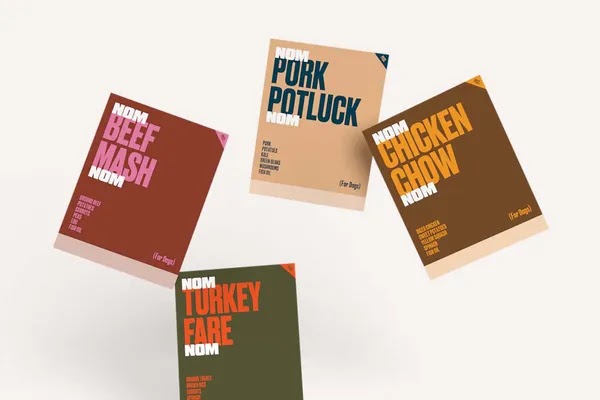

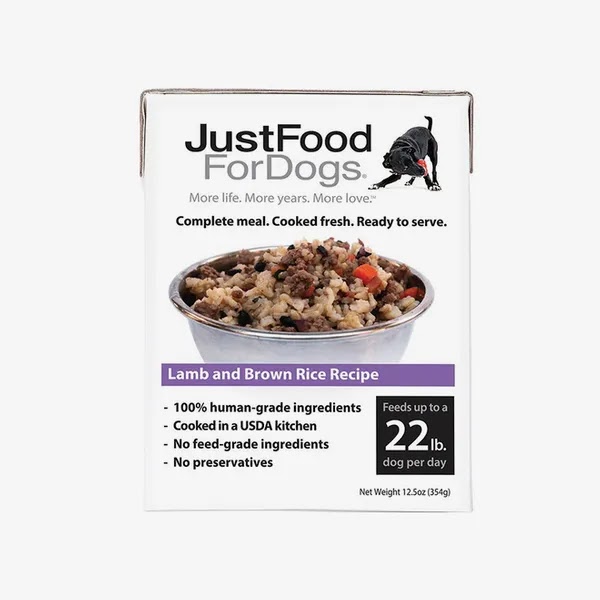
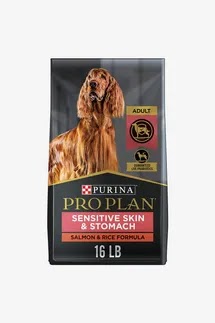

Comments
Post a Comment